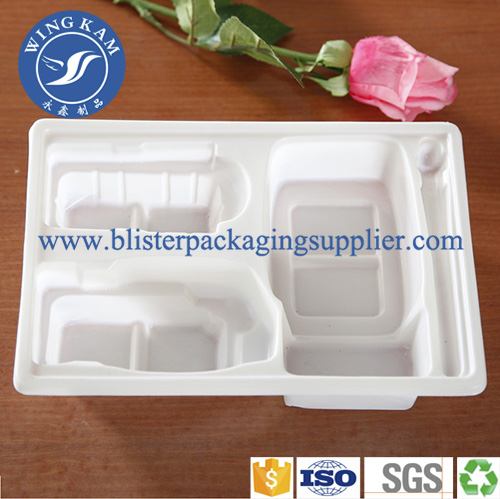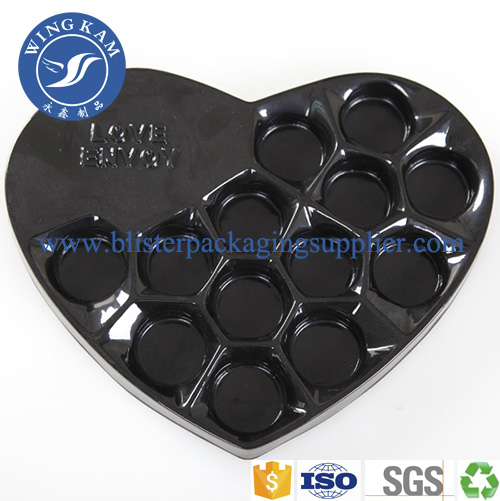Today, with the development of science and technology and the explosion of knowledge, the printing industry has achieved unprecedented development. Various kinds of books, periodicals, newspapers, commercial prints, and various kinds of exquisite packaging enrich our spiritual life and material life. At the same time, these printed materials are in production. The materials used, such as the volatiles of the ink, also have an impact on the environment. In order to protect the environment we depend on and achieve sustainable development, it is imperative to vigorously develop and use environmentally friendly inks.
At present, in the printing industry in various countries, offset printing is mainly used for news, books, and commercial printing. Gravure printing and flexo printing are increasingly used for packaging and printing. Screen printing is also developing rapidly. Emerging inkjet printing technologies are also Is promoting. The petroleum solvents in printing inks now contain components that are harmful to the human body, such as benzene, toluene, xylene, etc.; solvent inks used in gravure printing, screen printing, etc. contain 50% to 60% of volatile components. Diluents used to adjust the viscosity of the ink can also be harmful to the printer and the environment. With the development of the printing industry and the rising popularity of people's environmental protection, higher demands are placed on the printing industry and the printing ink industry. We need to reconstruct the original printing process and the printing materials used, and introduce printing that meets the requirements of environmental protection. Materials and processes.
Some developed countries in Europe and the United States have enacted legislation as early as in the 1990s to limit the emission of volatile organic solvents (VOCs). For example, the concentration of volatile substances in the workshop must be lower than: 50 mg/m3 of volatile organic solvents; carbon monoxide 100mg/m3; Nitric oxide 100mg/m3. Japan began implementing the "Environmental Purchase Law" in April 2001; the Japan Printing Industry Association established the industry environmental protection standard, "Offset Printing Service" standard in August 2001, implemented the Environmental Protection Purchase Act in the printing ink industry, and implemented PRTR (Pollutant). Release and Transfer Register) system and MSDS (Material Safety Data Sheet) system. The former is a system in which statistics and announcements are made by the government on the discharge and transfer of chemical substances in the production process of enterprises; the latter is announced by the manufacturer of chemical substances on the safe use of chemical substances for each product. The two systems make provisions for ink standards:
(1) Do not use substances harmful to the human body, such as benzene, fluorine, aromatic amines, diphenyl chloride, dioxazine, etc.
(2) Do not use chlorine-containing resins because unreacted free chlorine is harmful to the human body, and when it is burned, dibenzo-p-toldioxins are produced.
(3) Reduce the use of chemical substances, such as toxic heavy metals such as lead, cadmium, hexavalent chromium, and mercury, as pointed out in the PRTR law, because these substances will cause serious damage and pollution to the human body and the environment.
(4) Inhibiting the production of VOCs, because volatile organic compounds in the solvent will produce chemical fumes and become the culprit of atmospheric pollution.
At present, from the global research and development trends of inks, the following major categories of inks are the main directions for the development of environmentally friendly inks.
Theme - Water-based ink
1. Components
Water-based inks use water as the main solvent. The proportion of volatile components in the water-based ink is less than 25%. For inks with low water content, the volatility of the ink is less than 40%. The aqueous ink composition typically includes water-soluble or water-dispersible resins, insoluble pigments, organic pigment surfactants, auxiliaries, water and some solvents. Among them, the pigments mainly play a role of coloration and light blocking, and the resin is the link material of the ink and can firmly adhere the ink film to the substrate. The variety of resins experienced in the 20th century, the rosin acid amine salts of the 1970s, the acrylic solutions of the 80s and the 90s acrylic emulsions or colloidal dispersions at several stages of development, and different from the solvent-based ink resins, it Either emulsion or solvent, or both, and can form an emulsion or colloidal suspension with water, so that the pigment and other components in the ink are suspended in it. After the printing, water and some solvents are volatilized. The resin particle colloids attach the pigment particles to the substrate to form an ink film. Of course, a small amount of solvent in water-based ink is also indispensable, because the polarity of water is large, the surface tension is high, so when the resin and the substrate are attached, the water is not conducive to the formation and adhesion of the ink film on the substrate. The solvent helps the resin to adsorb on the substrate.
The use of additives in water-based inks is very important. Dispersants can make pigments well dispersed and do not fade in sunlight, such as DEP; mixed solvents can make the components in the ink compatible, eliminate surface suspended solids, and increase the Leveling, such as PI-35; crosslinker can accelerate the drying of the ink film, improve the ink film hardness, abrasion resistance, water resistance and heat resistance.
2. Features
Water-based inks are "green" printing inks, which have no impact on human health, no pollution to the environment, non-flammable, safe to use, stable in nature, colorful in color, high in purity, strong in color reproduction, fine in ink, clear dots, and after printing Good work force, strong water resistance, anti-static, non-corrosive plate, suitable for cosmetics, medicine, food, alcoholic drinks, children's toys and strict packaging requirements for sanitary conditions.
A major disadvantage of water-based ink is the slow drying speed, but this can be solved by increasing the flow of cold air, lengthening the drying channel, and reducing the thickness of the film. The second step is to enhance the ink drying speed and drying system.
The use of water-based inks facilitates the cleaning of equipment and is currently used mainly for flexo printing and gravure printing. It is understood that 95% of flexographic prints and 80% of gravure prints in the United States use water-based inks, and the trend of development and research has become the trend of the world. If a large number of water-based inks are used, wastewater treatment must be performed. The waste water used for washing drums, washing tanks, washing rolls, etc. must be treated with concentrated sedimentation and recycled to achieve true clean production and environmental protection.
3. Product gap
At present, domestic water-based inks are inferior to imported inks in terms of color, luster and stability. The gap in the overprinting of high-line cables is even more pronounced. The main reason is the gap between pigments and linking materials. Domestic pigments generally have higher oil absorption values ​​and are not suitable for aqueous systems. If water is used as the solvent, the color saturation will be insufficient, affecting the quality of printed products. The linking material in the water-based ink is usually a polymer emulsion or a water-dispersible resin. A water-soluble acrylic copolymer resin is commonly used in foreign countries. It performs well in terms of gloss, water resistance, chemical resistance, etc., and has previously been modified by rosin in China. Maleic resin, its gloss, water resistance, chemical resistance are significantly inferior. After the use of domestic acrylic resin emulsion, due to its poor stability, so that the quality of aqueous ink is affected. Therefore, to improve the quality of water-based ink in our country, the key must be changed from raw materials.
UV inks mature
The main components of UV inks include photopolymerization prepolymers, photoinitiators, diluting monomers (active monomers), organic pigments, additives, and the like. The photopolymerization prepolymer is a main component of the UV ink, and acrylic resins, acrylic urethanes, epoxy acrylate resins, acrylic polyesters, modified acrylic polyesters, and the like are generally used. Photopolymerization prepolymer is a UV ink binder, UV ink adhesion, abrasion resistance, chemical resistance, solvent resistance, hardness, viscosity, curing speed, etc. are all determined by it. The photoinitiator is an active organic group that initiates the cross-linking of the photopolymerization prepolymer. The UV ink curing process is a cross-linking process of the polymer, and the photoinitiator is irradiated with an external light source (generally using a certain wavelength of ultraviolet light). It is excited to become free radicals or ions, and then through intermolecular energy transfer, the prepolymers and photosensitive monomers in the ink form charge transfer complexes. These complexes are continuously cross-linked, so that UV inks generate light. Curing reaction from liquid to solid state. In the course of this reaction, there is substantially no solvent volatilization, which is conducive to environmental protection.
Our live in the use of tray packaging is very extensive, for food, chocolate, biscuits etc.The material of the product usually use PVC, PET,because the material is relatively healthy, environmental protection.Wing Kam Packaging Co.,Ltd. was established in 2001, we are manufacturer and support custom design.We specialize in this Thermoforming Tray Packaging and customized plastic tray. Our value message is "QUALITY IS OUR LIVE, WITHOUT QUALITY, WITHOUT US." If you order this Thermoforming Tray Packaging from us, YOUR BUSINESS WILL BE SAFE, YOUR MONEY WILL BE SAFE, YOUR PRODUCT OUT LOOK WILL BE GORGEOUS.
|
Item |
Plastic tray Packaging |
|
Dimension |
Customized |
|
Material |
PVC, PET |
|
Thickness |
0.2mm to 0.8mm |
|
Cardboard Insert |
Yes, Customized |
|
MOQ |
3000pcs |
|
Sample order |
Welcome & acceptable |



Welcome to order Plastic Tray Packaging.
Any questions please contact us freely.
Thermoforming Tray Packaging
Plastic Packaging Tray,Blister Packaging Tray ,Molded Pulp Packaging Trays,Custom Shape Thermoforming Tray
Shenzhen City Wing Kam Packaging Products Co., Ltd. , http://www.blisterpackagingsupplier.com